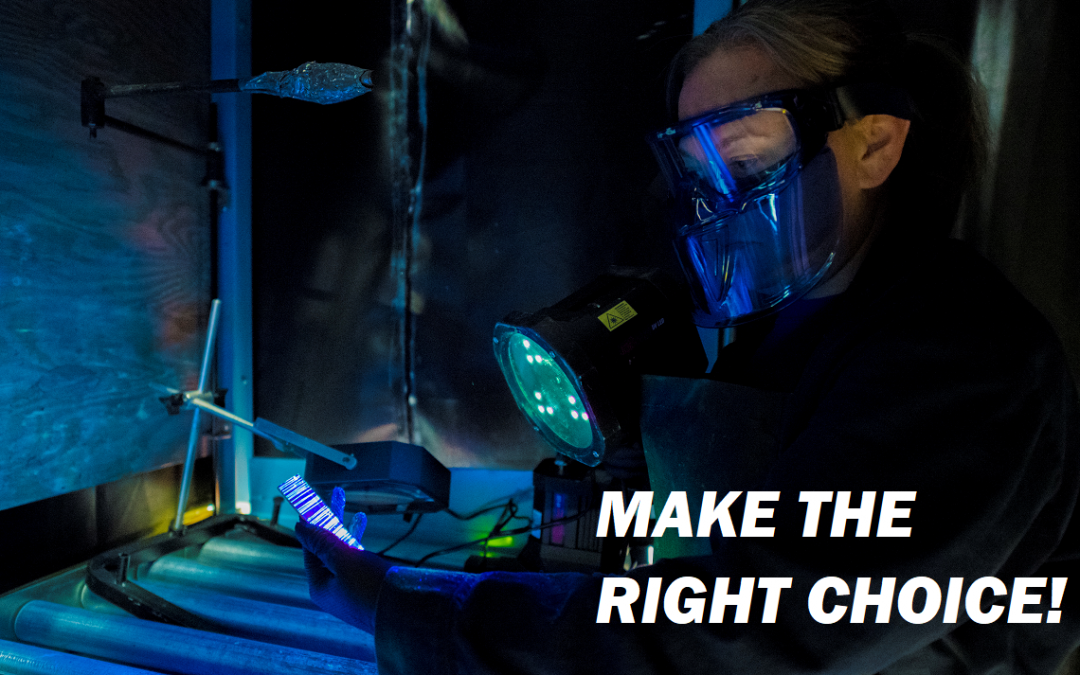Select the Correct UV-A Lamp for Your NDT Needs
Blog | 02.10.20
For decades, Mercury and Xenon technology dominated fluorescent inspection methods such as liquid penetrant testing or magnetic particle inspections. While the Xenon technology (MPXL) is still in use, mercury has been widely removed due to environmental regulations and a manufacturing stop of mercury bulbs. LED UV-A light sources are now the preferred solution for NDT professionals, offering advantages such as greater efficiency, lower cost of ownership (i.e. frequent change of bulbs), less heat, instant on/off. However, several technical parameters need consideration when selecting the right UV-A lamp for NDT, such as the emission spectrum and beam profile. Certifications and test reports must accompany the equipment so that the user knows exactly its advantages but also its limitations.
PEAK WAVELENGTH
Peak wavelength is the most important criterion when selecting an LED lamp for fluorescent inspection. This is because fluorescent penetrants and magnetic particle materials were designed to fluoresce under UV-A at 365 nm. With LEDs, the peak wavelength can vary. It is important that the correct LEDs are used when the UV lamp is manufactured but also that the electronic and mechanical properties of the UV-A light do not damage the UV-A LEDs with excessive heat. To make sure that an LED UV-A lamp produces fluorescence in penetrants and magnetic particle materials, the LEDs must have a peak wavelength within the range 360-370 nm, irrespective of the time they operate.
EMISSION SPECTRUM
Fluorescent penetrant and magnetic particle inspections are performed in a dark environment to increase contrast. It is often the case that traces of visible light generated from the 400 nm plus region, in the form of a glare, can interfere with the actual inspection, producing misleading results. Aerospace specifications such as Rolls-Royce RRES 90061, Airbus AITM6-1001, Nadcap AC7114 but also specifications for the general industry such as ASTM E3022-18 require a UV-A pass filter to block visible emission. For that reason, any lamp used for aerospace inspection, such as the MB 2.0 Series, BB 2.0 Series, UVG3 2.0 Series, UVG5 2.0 Series, GX Series, include a UV-A pass filter to block visible emission.
Read more about What is ASTM E3022-18 and Why do we need it?
BEAM PROFILE vs WORKING DISTANCE
The beam area of an LED UV-A lamp is the UV-A surface that is covered by at least 1,000 µW/cm2 irradiance. This is the minimum required for an inspection. The covered area varies significantly, depending on the light used. Therefore, it requires exact knowledge by the operator, of the light coverage and from what distance it is generated. UV-A lights often have more than one UV-A LED which create patterns in the form of shades if an operator use the light closer to the object than the specified working distance. This puts the inspection at risk as it could lead to missed indications. It is important for the operator to have knowledge of the values associated with these parameters and can be supplied by us.
Check out Labino’s range of LED UV lamps for non-destructive testing
PORTABILITY
An LED UV-A lamp can operate on battery power for several hours if it is equipped with a current regulator. The current regulator monitors the battery discharge and shuts the lamp automatically before irradiance drops below 1,000 µW/cm2. This allows a lamp to be portable, a useful tool for field inspections.
Check out Labino’s solutions for field inspection LED UV lamps for non-destructive testing
CERTIFICATIONS:
Check out Labino’s lights tested to comply with ASTM E3022-18
Check out Labino’s lights tested to comply with Rolls-Royce RRES 90061
Check out Labino’s lights tested to comply with Airbus AITM6-1001

